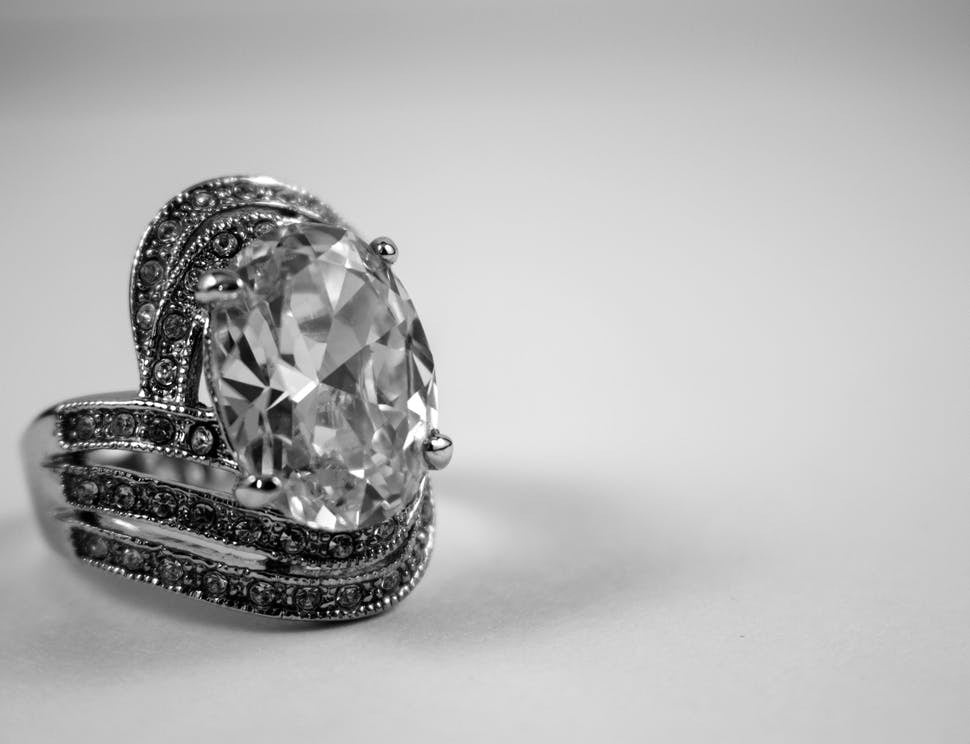No two diamonds are the same and will vary significantly in value. In addition to various sizes, shapes, and colors, diamonds will have internal characteristics that set them apart from others. Any diamond that is polished has value, some much more than others, but what makes some more valuable?
The value is based on several factors. Rarity is one that comes into play and can make a big difference in the price. However, rarity is a hard thing to measure precisely. Certain qualities such as size and particularly color can make a diamond rarer.
Professional diamond graders judge a diamond's value based on the 4Cs of color, clarity, cut, and carat weight. A low score on any one or a combination of the 4Cs will reduce a diamond's value.
Inclusions - negative features that detract from a diamond's value
One of the characteristics of a diamond that make it so attractive is its transparency. We want the diamond to be very clear. The second of the 4C diamond characteristics, clarity, refers to how many inclusions a diamond has.
Inclusions are flaws inside the gemstone that detract from value. Diamond graders are looking for the best diamonds, internally flawless ones. It's rare to find a completely flawless diamond, but as long as the naked eye can't see the inclusions, the value will be higher.
Diamonds frequently contain inclusions, like many other stones from nature. Inclusions or flaws can change the look and clarity and can be found in all types of diamonds.
Blemishes and scratches on a diamond's surface can also affect clarity, but these can often be polished away. If you have jewelry with scratches of blemishes on a diamond, keep in mind a jeweler will have to remove that diamond for polishing.
How are inclusions formed in a diamond?
Diamonds are made entirely of the element carbon and formed 135-180 kilometers deep in the Earth's mantle billions of years ago. At that depth, there are very high pressures and temperatures that cause the carbon atoms to become arranged in a dense cubic crystal structure.
Different minerals or impurities can be trapped in the diamond's crystal structure as they are formed. As described previously, the fewer of these impurities called inclusions are trapped within the gemstone structure, the higher the grade of clarity.
Types of inclusions
Different types of inclusions may affect the value and the appearance of the diamond. By looking at the shape and the structure of the inclusion, specific names can be given to certain types.
A diamond certificate should have an inclusion map, also called a clarity characteristics line. Inclusions and blemishes of all types are called "clarity characteristics." A key in the inclusion map will indicate what the inclusions look like in your diamond and their position within the stone.
Crystal or mineral inclusion
One type is called a crystal inclusion. Some crystals look like a diamond within the diamond or may look a lot like bubbles. Most crystal inclusions can't be seen without magnification, but there can be groupings of crystals so thick they can be seen with the naked eye. If a thick crystal takes on a darker appearance, that lowers its clarity grade and the diamond's value.
Cloud inclusion
A cloud inclusion is a broad term denoting a group of small inclusions close together. They can be large or small, dense or sparse, and can look very different if the diamond has an immense cloud. If the cloud inclusion starts to look cloudy or hazy, it will harm the stone's appearance to the naked eye.
Feathers
One of the simplest types of inclusions to recognize and classify is a feather inclusion. As a diamond rises through the Earth's crust, the immense pressure can cause a crack or a fracture within the stone that looks similar to a feather. They usually appear white and vary significantly in size and shape.
If the fracture is small, it typically won't affect the diamond's durability unless the feather reaches the surface on the diamond's top, where accidental blows may happen.
Needle
A needle is comparable to a crystal inclusion but has a shape like a needle. It forms when extreme pressure turns a crystal into a needle shape instead of the usual circle. Needle inclusions are seldom visible to the naked eye and are usually white or translucent.
Indented natural
Another type of inclusion is called an indented natural. This occurs when part of a rough diamond's skin is left on the polished stone's surface and then goes inside the diamond. Strictly speaking, it is not an inclusion in the ordinary sense but is counted as one as it breaks the stone's natural surface. And when it doesn't break the surface, it's simply called a natural, and it's not counted as inclusion.
You could have an internally flawless diamond, but it would still have a natural marked on the inclusion map. Naturals are usually on the girdle of the diamond.
Twinning wisp inclusions
This is oddly named inclusion occurs when a diamond ceases growing and then starts growing again in a different direction, possibly thousands of years later. The change in grain leaves a mark in the diamond similar to a knot in a piece of wood. Twinning wisp inclusions are typical in heart-shaped stones as the resultant twin stone is a very suitable shape for a heart-shaped or pear-shaped diamond.
Conclusion
Inclusions in diamonds can range in size from the sub-microscopic to the millimeter scale. Larger diamonds are statistically more likely to contain more inclusions, and these inclusions are more likely to be larger. The number of diamonds with visually recognizable inclusions is generally relatively small.
When you're buying a diamond, it's essential to look at the detail of the stone's impurities so you know why your diamond has been given its particular grade of clarity. This is especially important when buying a diamond with a lower grade of clarity as it can sometimes significantly affect both the appearance and the price of your gemstone.


